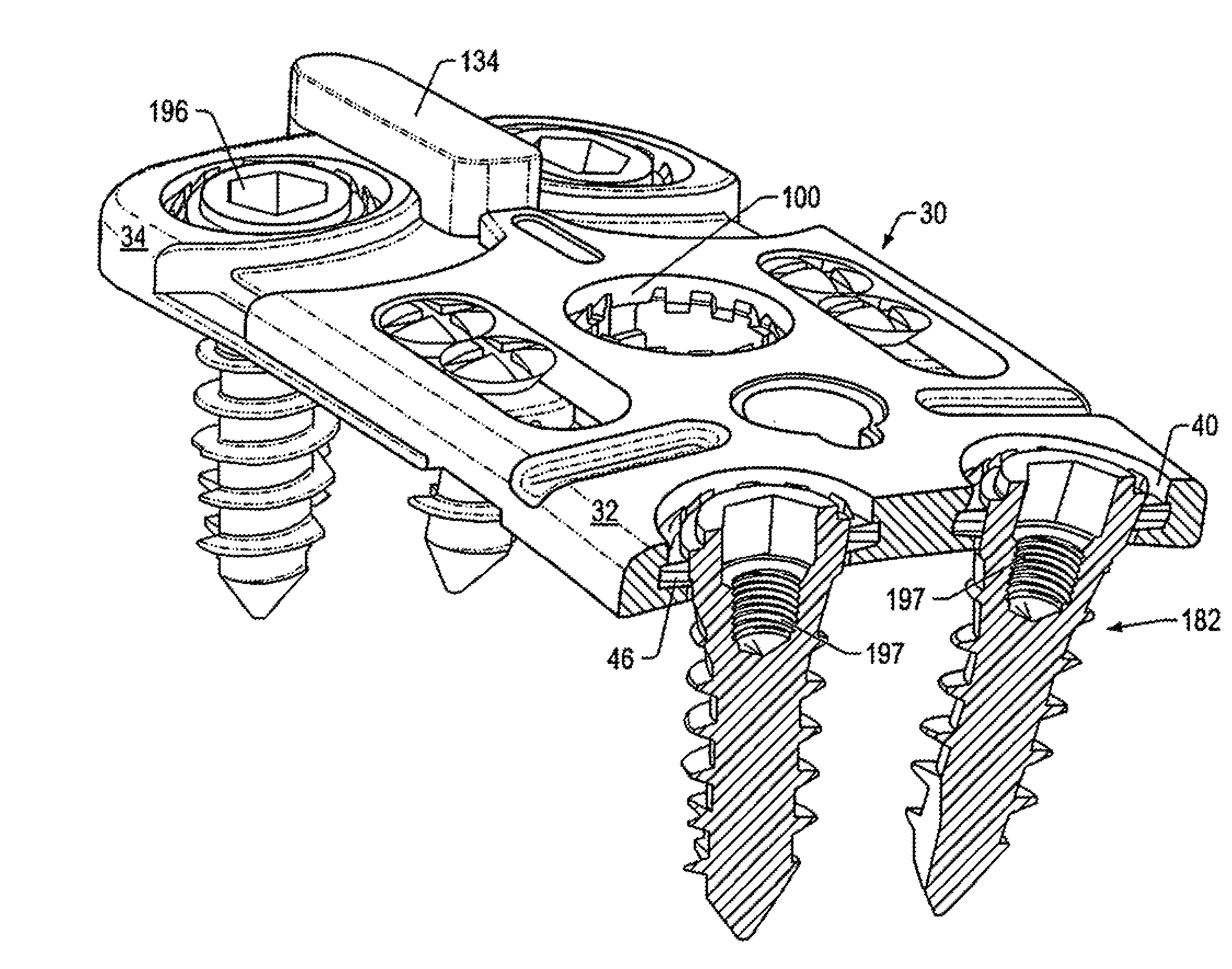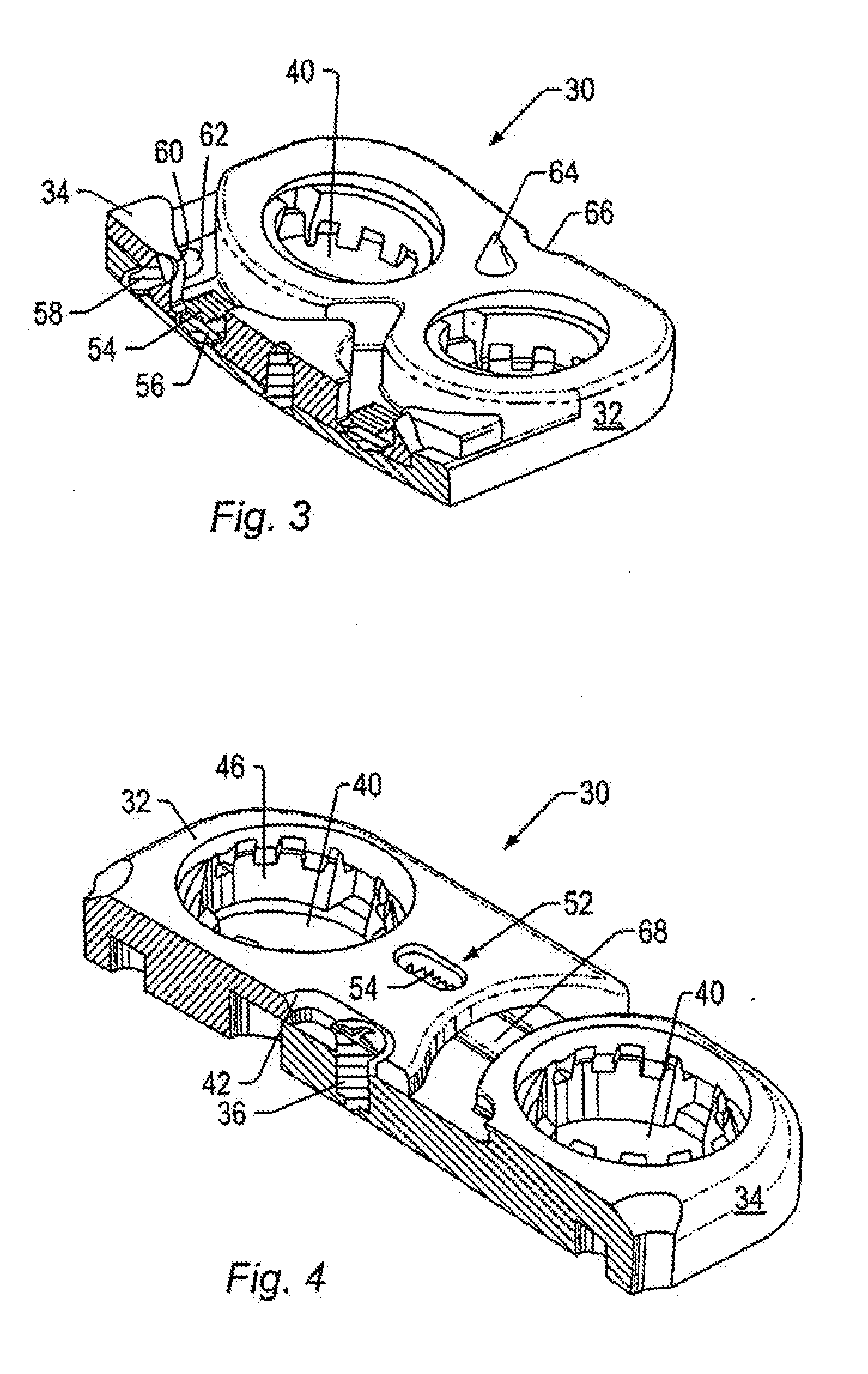Spinal plate system for stabilizing a portion of a spine
a spine and plate technology, applied in the field of compression plate, can solve the problems of destabilizing a spinal column, degeneration of the intervertebral disc, pain and/or nerve damage, etc., and achieve the effect of reducing concerns about positioning and/or dropping retainers, reducing the risk of fracture, and minimizing the damage of adjacent tissu
- Summary
- Abstract
- Description
- Claims
- Application Information
AI Technical Summary
Benefits of technology
Problems solved by technology
Method used
Image
Examples
Embodiment Construction
[0061] A spinal plate system may be used to stabilize a portion of a spine. A spinal plate system may include a spinal compression plate and fasteners that couple the spinal compression plate to vertebrae. Components of a spinal plate system may include materials such as, but not limited to, stainless steel, titanium, titanium alloys, ceramics, and / or polymers. Some components of a spinal plate system may be made of materials that may be autoclaved and / or chemically sterilized. Some components of a spinal plate system may be formed of materials unable to be autoclaved and / or chemically sterilized. Components unable to be autoclaved and / or chemically sterilized may be made of sterile materials and placed in working relation to other sterile components during assembly of a spinal plate system.
[0062] Spinal plate systems may typically be used to correct problems in lumbar and cervical portions of a spine resulting from injury and / or disease. For example, a spinal plate system may be i...
PUM
 Login to View More
Login to View More Abstract
Description
Claims
Application Information
 Login to View More
Login to View More - R&D
- Intellectual Property
- Life Sciences
- Materials
- Tech Scout
- Unparalleled Data Quality
- Higher Quality Content
- 60% Fewer Hallucinations
Browse by: Latest US Patents, China's latest patents, Technical Efficacy Thesaurus, Application Domain, Technology Topic, Popular Technical Reports.
© 2025 PatSnap. All rights reserved.Legal|Privacy policy|Modern Slavery Act Transparency Statement|Sitemap|About US| Contact US: help@patsnap.com



